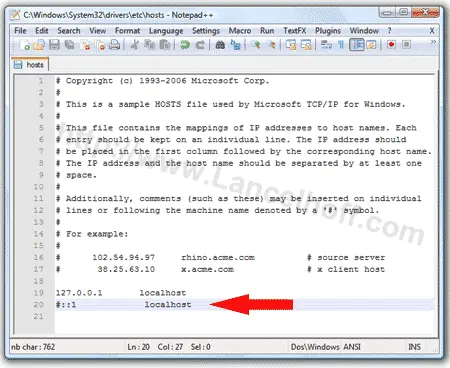How to access Localhost; By default the Windows TCP IP stack does not allow access to a local server using localhost. Many people find this out the hard way, after having installed XAMPP or another local server software on their Windows computer. After installation, they can access the local server via the local IP address 127.0.0.1, but not from https or http://localhost/.
In the following simple solution, I show you how to resolve this problem and regain access to your XAMPP or other localized server using localhost once again.

What is Localhost?
Localhost refers to the hostname that means this computer. It is used to access the network services running on the host through the loopback network interface. The loopback interface is a virtual network device that your computer uses to communicate with itself. Here are some of its uses:
- IP Address Mapping: It most commonly maps to the IP address 127.0.0.1 in IPv4, and ::1 in IPv6.
- Local Loopback: The loopback mechanism is used by a computer to route network traffic to itself. It is primarily used for testing and development purposes.
- Common Use Cases: Developers often use it to run web servers on their local machines for testing websites and applications before deploying them to a public live server. It can also be used to locally test software without affecting other devices on a network. Some network services and protocols are designed and required to communicate over it for inter-process communication (IPC).
- Host File Configuration: By default, most operating systems (Windows, macOS, and Linux) have an entry in the hosts file that maps it to 127.0.0.1.
To summarize, it is a standard term used to denote the local machine, and it is primarily used for testing, development, and local network communications.
Access Localhost (edit hosts file from Windows)
- Navigate to C:\Windows\System32\drivers\etc
- Open the hosts file with a text editor, and remark the following line:
::1 localhost - So it looks like this:
#::1 localhost
- Save the hosts file.
- Restart your local server and try to access it via http://localhost/.
If all went well you can now use it to access your local server in place of the IP address 127.0.0.1 or ::1
Precautions for Exposing Local Servers to the Internet
While working with local servers, it's important to ensure they are secure if you intend to make them accessible over the internet. Here are some basic precautions:
- Firewall Configuration: Ensure your firewall is properly configured to allow only necessary traffic.
- Authentication and Authorization: Implement strong authentication and authorization mechanisms to control access.
- Use Secure Protocols: When possible, use HTTPS instead of HTTP to encrypt the data transmitted.
- Limit Exposure: Restrict the IP addresses or ports that can access your server to only those that need it.
- Regular Updates: Keep your server software and dependencies up to date to protect against known vulnerabilities.
- Use Traffic Monitoring: Use traffic monitoring tools to keep an eye on your server's performance and potential security threats.
By following these steps and precautions, you can safely run and test your local server while minimizing security risks.
Frequently Asked Questions (FAQ)
Why can't I access localhost on Windows?
By default, Windows may block localhost access due to the TCP/IP stack configuration or security settings. Editing the hosts file as shown above can resolve this issue.
What is the default IP address for localhost?
It typically maps to 127.0.0.1 in IPv4 and ::1 in IPv6.
How do I edit the hosts file in Windows?
Navigate to C:\Windows\System32\drivers\etc, open the hosts file with a text editor, make the necessary changes, and save it with administrative privileges.
Why is localhost important for developers?
Developers might want to test applications locally before deploying them to a live server. Running apps locally allows safe testing of software tools without affecting users in real time.
Can I access my localhost from another device?
Yes, but you need to use your local network IP address instead of localhost and configure your firewall and server settings accordingly.
Final Thoughts on Editing Hosts File
Accessing localhost on Windows can sometimes be tricky due to system restrictions, but by modifying the hosts file, you can restore its functionality. Whether you're a developer testing applications or just setting up a local server, understanding how localhost works is essential. By following the steps outlined above, you can regain access and improve your workflow. Just remember to take the necessary security precautions if you plan to expose your local server to the internet.